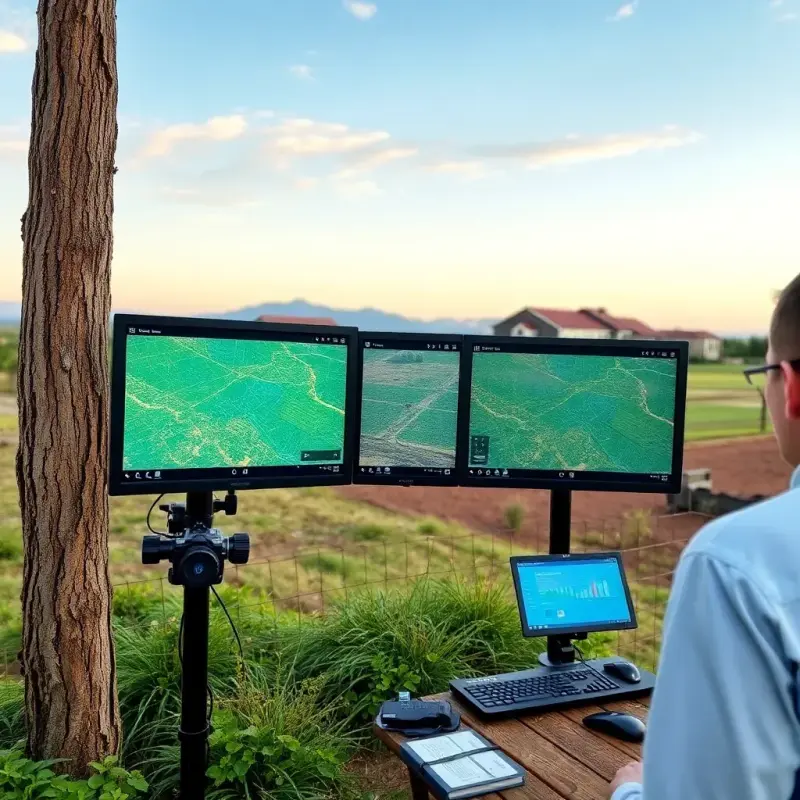Rare Devices for Monitoring Landscape Changes: How Gadgets Aid Scientists and Ecologists
In today’s rapidly changing world, tracking and understanding landscape changes is crucial for scientists and ecologists. Human activities, natural disasters, and climate shifts are altering environments at an unprecedented pace. Traditional methods like manual surveys and satellite imagery are vital, but rare and specialized gadgets are adding a new dimension to environmental research. These devices provide precise data and allow experts to study changes in real time. This article explores some unique and underutilized technologies that are proving invaluable in environmental observation.

1. Portable Spectroradiometers
A spectroradiometer is a tool that measures the intensity of various wavelengths of light reflected from the Earth's surface. While commonly used in labs, portable versions are now available for fieldwork. These devices help scientists measure vegetation health by analyzing how plants absorb and reflect light. For example, healthy vegetation reflects near-infrared light differently compared to stressed or damaged plants. By using portable spectroradiometers, researchers can quickly assess the impact of droughts, wildfires, or disease outbreaks in specific regions.
Use Case
Ecologists studying deforestation in the Amazon rainforest have used portable spectroradiometers to measure how land clearing affects local flora. This data not only shows immediate vegetation loss but also predicts long-term effects on local ecosystems.
2. Acoustic Monitoring Devices
Sound monitoring might not be the first thing that comes to mind when thinking of landscape analysis, but it plays a key role in environmental research. Acoustic sensors can detect subtle changes in wildlife activity and water flow. These gadgets capture soundscapes over long periods, revealing patterns like the migration of bird species, insect population dynamics, or river flow variations due to climate change.
Application
In coastal ecosystems, researchers use underwater acoustic monitors to detect changes in fish populations and analyze how these shifts relate to coral reef health. On land, these devices can track the impact of urban development on natural habitats, offering insights into species conservation efforts.
3. Ground Penetrating Radar (GPR)
Ground Penetrating Radar (GPR) is an innovative tool that sends electromagnetic waves into the ground and measures the reflected signals to create subsurface images. It's especially valuable for studying geological structures, soil composition, and even hidden archaeological sites. For landscape monitoring, GPR helps assess soil erosion and sediment buildup, crucial for understanding how landscapes evolve over time.
Scientific Insight
In regions prone to landslides, GPR data enables scientists to map out areas with unstable soil layers. This early warning system can prevent disasters and guide land use planning. Moreover, in wetlands, GPR is used to monitor peat thickness, contributing to carbon sequestration studies.
4. Environmental DNA (eDNA) Analyzers
One of the more recent advancements in ecological monitoring is the use of eDNA analyzers. These portable devices detect traces of DNA left behind by organisms in water, soil, or air samples. By identifying species present in an area, scientists can monitor biodiversity and detect invasive species before they become problematic.
Innovative Approach
In freshwater ecosystems, eDNA is used to track the presence of endangered fish species without the need for invasive sampling techniques. Ecologists working in remote wetlands can quickly analyze water samples on-site, making conservation efforts more efficient.
5. Soil Moisture Sensors for Drought Monitoring
Soil moisture sensors are compact devices that measure the water content in the soil, providing critical insights into drought conditions and water availability for plants. By embedding these sensors in key areas, scientists can track soil moisture levels over time and assess how vegetation responds to prolonged dry periods.
Real-World Application
In agricultural and natural landscapes, these sensors help ecologists monitor how droughts impact plant life and soil health. They enable early interventions, which support ecosystem resilience and sustainable land management practices.
The Impact of These Gadgets
The data collected by these rare devices have significant implications for environmental policy and conservation strategies. By providing more accurate and comprehensive information, scientists and ecologists can make informed decisions to protect ecosystems and mitigate the effects of climate change.
These advanced gadgets have revolutionized landscape monitoring, offering more than just a snapshot of an area but a detailed, data-rich analysis of ongoing changes. As technology continues to evolve, the future of environmental monitoring looks promising, with even more innovative tools on the horizon.
Articles
Sign up for our notifications to ensure you never miss the latest and most compelling articles delivered to your inbox.